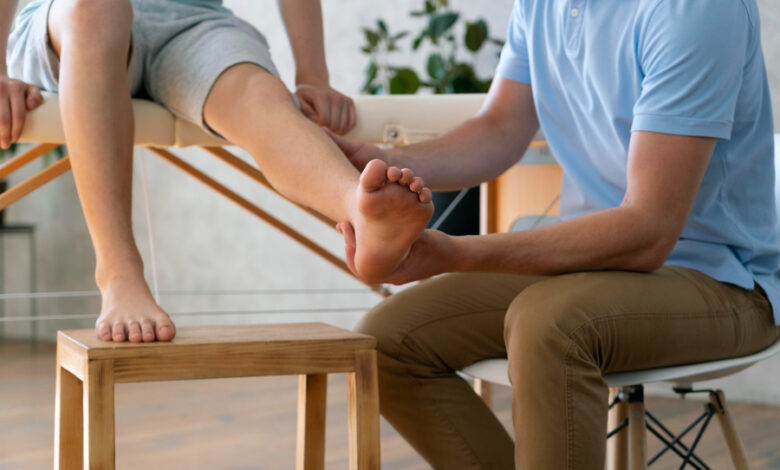Diabetes and Foot Care in Greater San Antonio

Understanding Foot Care for Diabetics in Greater San Antonio
Living with diabetes in Greater San Antonio requires diligent attention to foot care due to the increased risk of complications such as neuropathy, foot ulcers, and infections. Proper foot care practices are crucial for maintaining overall health and preventing serious foot problems that can arise from diabetes-related nerve damage and poor circulation. Managing diabetes and foot care in Greater San Antonio necessitates regular monitoring and adopting specific strategies to mitigate potential complications associated with neuropathy and impaired circulation.
The Importance of Foot Care for Diabetics
Diabetes can affect nerves and blood vessels in the feet, leading to reduced sensation and blood flow. This makes diabetics more susceptible to foot injuries and slower wound healing. Effective foot care is essential for:
- Preventing Complications: Regular monitoring and care help detect and manage issues early, preventing infections and more severe complications.
- Enhancing Mobility: Healthy feet enable daily activities and maintain independence.
- Improving Circulation: Good blood flow aids in healing wounds and reduces the risk of infections and amputations.
Essential Foot Care Tips for Diabetics
- Daily Foot Inspections: Check your feet thoroughly every day for cuts, sores, blisters, redness, or swelling. Use a mirror to inspect the bottoms of your feet if necessary.
- Keep Feet Clean and Dry: Wash your feet daily with lukewarm water and mild soap, ensuring to dry them completely, especially between the toes, to prevent fungal infections.
- Moisturize Regularly: Apply a moisturizer to keep the skin soft and prevent cracks. Avoid applying moisturizer between the toes to prevent excess moisture buildup.
- Trim Nails Carefully: Cut toenails straight across and file the edges gently to prevent ingrown nails. Avoid cutting them too short to prevent injury.
- Choose Proper Footwear: Wear shoes that fit well, provide support, and protect your feet. Avoid tight, pointed shoes and opt for breathable materials. Diabetic shoes or inserts may be recommended to reduce pressure points.
- Protect Your Feet: Always wear socks and shoes to protect your feet from injuries. Check inside your shoes for any foreign objects or rough spots before wearing them.
- Maintain Blood Sugar Levels: Control your blood sugar levels within the target range recommended by your healthcare provider. Consistently high blood sugar levels can impair circulation and nerve function.
Additional Considerations for Diabetic Foot Care
- Regular Foot Exams: Schedule regular check-ups with a podiatrist or healthcare provider specializing in diabetic foot care to monitor your foot health.
- Diabetic Footwear: Consider wearing diabetic shoes or orthotic inserts prescribed to alleviate pressure points and reduce the risk of foot ulcers.
- Avoid Smoking: Smoking narrows blood vessels and impairs circulation, increasing the risk of complications in diabetic feet.
When to Seek Medical Attention
- Foot Problems: Seek immediate medical attention for any foot problems such as cuts, sores, infections, or changes in sensation.
- Persistent Symptoms: Consult your healthcare provider if you experience persistent foot pain, tingling, numbness, or any other unusual symptoms.
Conclusion
Effective foot care is vital for diabetics in Greater San Antonio to prevent complications and maintain overall well-being. By incorporating these essential foot care practices into your daily routine and staying vigilant with monitoring and professional care, you can mitigate risks, promote healing, and enjoy improved foot health and quality of life. Prioritize your foot health today to ensure long-term mobility and comfort while managing diabetes effectively.
FAQs about Diabetes and Foot Care
1. How often should diabetics check their feet?
It’s recommended to check your feet daily and conduct a more thorough examination at least once a week.
2. Can diabetes cause foot problems even if blood sugar is controlled?
Yes, diabetes can lead to long-term foot complications, even with well-managed blood sugar levels.
3. Are there exercises to improve foot health for diabetics?
Gentle exercises like ankle rotations and toe stretches can improve circulation and foot flexibility. Consult your healthcare provider for personalized recommendations.
4. What should I do if I notice a foot ulcer?
Immediately seek medical attention for proper evaluation and treatment of foot ulcers to prevent complications.
5. Is it safe to soak feet if you have diabetes?
Avoid soaking feet in hot water, as it can dry out the skin and increase the risk of infections. Use lukewarm water and thoroughly dry your feet afterward.



